



The 18th century was considered the Age of Reason. A lot of myths were contradicted by scientific fact. [7] Jamaican "doctresses" such as Cubah Cornwallis, Sarah Adams and Grace Donne, the mistress and healer to Jamaica's most successful planter, Simon Taylor, had great success using hygiene and herbs to heal the sick and wounded. [8]


on Thursday last [i.e.Nov 8] we had 1715 sick and wounded in this hospital (among whom, 120 cholera patients) and 650 severely wounded in...the General Hospital...when a message came to me to prepair for 510 wounded....
— (Seymer 1932)
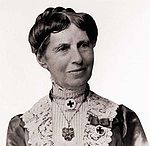






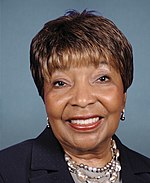
I define caring as a "nurturing way of relating to a valued 'other' toward whom one feels a personal sense of commitment and responsibility"
— (Swanson 1991), page 162

A registered nurse (RN) is a nurse who has graduated or successfully passed a nursing program from a recognized nursing school and met the requirements outlined by a country, state, province or similar government-authorized licensing body to obtain a nursing license. An RN's scope of practice is determined by legislation, and is regulated by a professional body or council.

Florence Nightingale was an English social reformer, statistician and the founder of modern nursing. Nightingale came to prominence while serving as a manager and trainer of nurses during the Crimean War, in which she organised care for wounded soldiers at Constantinople. She significantly reduced death rates by improving hygiene and living standards. Nightingale gave nursing a favourable reputation and became an icon of Victorian culture, especially in the persona of "The Lady with the Lamp" making rounds of wounded soldiers at night.
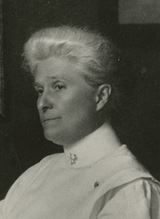
Anna Caroline Maxwell, was a nurse who came to be known as "the American Florence Nightingale". Her pioneering activities were crucial to the growth of professional nursing in the United States.

Mary Jane Seacole was a British nurse and businesswoman.
Nurse education consists of the theoretical and practical training provided to nurses with the purpose to prepare them for their duties as nursing care professionals. This education is provided to student nurses by experienced nurses and other medical professionals who have qualified or experienced for educational tasks, traditionally in a type of professional school known as a nursing school of college of nursing. Most countries offer nurse education courses that can be relevant to general nursing or to specialized areas including mental health nursing, pediatric nursing, and post-operative nursing. Nurse education also provides post-qualification courses in specialist subjects within nursing.

Most professional militaries employ specialised military nurses or nursing sisters. They are often organised as a distinct nursing corps. Florence Nightingale formed the first nucleus of a recognised Nursing Service for the British Army during the Crimean War in 1854. In the same theatre of the same war, Professor Nikolai Ivanovich Pirogov and the Grand Duchess Yelena Pavlovna originated Russian traditions of recruiting and training military nurses – associated especially with besieged Sevastopol (1854–1855). Following the war Nightingale fought to institute the employment of women nurses in British military hospitals, and by 1860 she had succeeded in establishing an Army Training School for military nurses at the Royal Victoria Military Hospital in Netley, Hampshire, England.
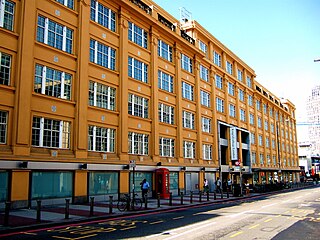
The Florence Nightingale Faculty of Nursing, Midwifery & Palliative Care is an academic faculty within King's College London. The faculty is the world's first nursing school to be continuously connected to a fully serving hospital and medical school. Established on 9 July 1860 by Florence Nightingale, the founder of modern nursing, it was a model for many similar training schools through the UK, Commonwealth and other countries for the latter half of the 19th century. It is primarily concerned with the education of people to become nurses and midwives. It also carries out nursing research, continuing professional development and postgraduate programmes. The Faculty forms part of the Waterloo campus on the South Bank of the River Thames and is now one of the largest faculties in the university.
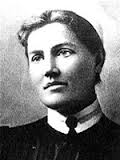
Isabel Adams Hampton Robb (1859–1910) was an American nurse theorist, author, nursing school administrator and early leader. Hampton was the first Superintendent of Nurses at the Johns Hopkins School of Nursing, wrote several influential textbooks, and helped to found the organizations that became known as the National League for Nursing, the International Council of Nurses, and the American Nurses Association. Hampton also played a large role in advancing the social status of nursing through her work in developing a curriculum of more advanced training during her time at the Johns Hopkins School of Nursing.

Dame Alicia Frances Jane Lloyd Still, was a British nurse, teacher, hospital matron and leader of her profession. She was one of the leaders in the campaign for state registration of nurses. Following the Nurses Registration Act 1919, she was a member of the General Nursing Council (1920-1937). As chairwoman of the General Nursing Council's first Education and Examinations Committee she helped establish the first national examination standards for the registration of nurses.
The Johns Hopkins University School of Nursing (JHUSON) is the nursing school of Johns Hopkins University in Baltimore, Maryland. Established in 1889, it is one of the nation's oldest schools for nursing education. It is continuously rated as the top nursing program in the US per U.S. News & World Report.
The word "nurse" originally came from the Latin word "nutrire", meaning to suckle, referring to a wet-nurse; only in the late 16th century did it attain its modern meaning of a person who cares for the infirm.

Nursing is a profession within the healthcare sector focused on the care of individuals, families, and communities so they may attain, maintain, or recover optimal health and quality of life. Nurses can be differentiated from other healthcare providers by their approach to patient care, training, and scope of practice. Nurses practice in many specialties with differing levels of prescription authority. Nurses comprise the largest component of most healthcare environments; but there is evidence of international shortages of qualified nurses. Nurses collaborate with other healthcare providers such as physicians, nurse practitioners, physical therapists, and psychologists. There is a distinction between nurses and nurse practitioners; in the U.S., the latter are nurses with a graduate degree in advanced practice nursing, and are permitted to prescribe medications unlike the former. They practice independently in a variety of settings in more than half of the United States. Since the postwar period, nurse education has undergone a process of diversification towards advanced and specialized credentials, and many of the traditional regulations and provider roles are changing.

Mary Adelaide Nutting was a Canadian nurse, educator, and pioneer in the field of hospital care. After graduating from Johns Hopkins University's first nurse training program in 1891, Nutting helped to found a modern nursing program at the school. In 1907, she became involved in an experimental program at the new Teachers College at Columbia University. Ascending to the role of chair of the nursing and health department, Nutting authored a vanguard curriculum based on preparatory nursing education, public health studies, and social service emphasis. She served as president of a variety of councils and committees that served to standardize nursing education and ease the process of meshing nurse-profession interest with state legislation. Nutting was also the author of a multitude of scholarly works relating to the nursing field, and her work, A History of Nursing, remains an essential historic writing today. She is remembered for her legacy as a pioneer in the field of nursing, but also her activist role in a time where women still had limited rights.
Nursing in India is the practice of providing care for patients, families, and communities in that nation to improve health and quality of life.

Hester Maclean, was an Australian-born nurse, hospital matron, nursing administrator, editor and writer who spent most of her career in New Zealand. She served in the First World War as the founding Matron-in-Chief of the New Zealand Army Nursing Service, and was one of the first nurses to be awarded the Florence Nightingale Medal.
The history of nursing in the United Kingdom relates to the development of the profession since the 1850s. The history of nursing itself dates back to ancient history, when the sick were cared for in temples and places of worship. In the early Christian era, nursing in the United Kingdom was undertaken by certain women in the Christian Church, their services being extended to patients in their homes. These women had no real training by today's standards, but experience taught them valuable skills, especially in the use of herbs and folk drugs, and some gained fame as the physicians of their era. Remnants of the religious nature of nurses remains in Britain today, especially with the retention of the job title "Sister" for a senior female nurse.

The history of nursing in the United States focuses on the professionalization of Nursing in the United States since the Civil War.
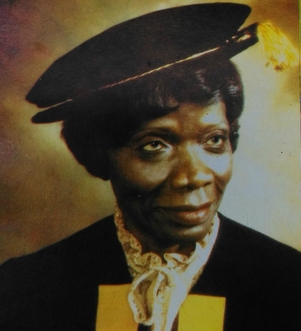
Chief Kofoworola Abeni Pratt Hon. FRCN was a Nigerian nurse who was one of the first notable black nurses to work in Britain's National Health Service. She subsequently became vice-president of the International Council of Nurses and the first black Chief Nursing Officer of Nigeria, working in the Federal Ministry of Health.

The statue of Mary Seacole stands in the grounds of St Thomas' Hospital, Lambeth, London. Sculpted by Martin Jennings, the statue was executed in 2016. It honours Mary Seacole, a British-Jamaican who established a "British Hotel" during the Crimean War and who was posthumously voted first in a poll of "100 Great Black Britons".
{{cite web}}: CS1 maint: archived copy as title (link){{cite web}}: CS1 maint: archived copy as title (link){{cite web}}: CS1 maint: archived copy as title (link){{cite web}}: CS1 maint: archived copy as title (link){{cite web}}: CS1 maint: archived copy as title (link)History was always part of the curriculum but declined in emphasis and time dedicated to it
{{cite book}}: CS1 maint: location missing publisher (link){{cite encyclopedia}}: Missing or empty |title= (help){{cite encyclopedia}}: Missing or empty |title= (help){{cite encyclopedia}}: Missing or empty |title= (help)